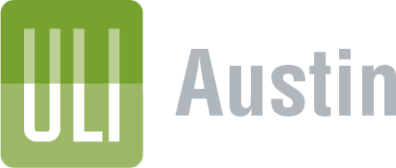Week Three – Here in Austin
COMPLETE 7 OF THE FOLLOWING TASKS:We encourage everyone to do tasks #2, #11, and #12. |
- Read Uprooted: Residential Displacement in Austin’s Gentrifying Neighborhoods and What Can Be Done About It by The University of Texas at Austin (pg 14 – 46)
• Part 1 – Background on Gentrification and Displacement
• Part 2 – Identifying and Mapping Gentrifying Neighborhoods in Austin - Read Austin American Statesman’s series of articles, Inheriting Inequality.
• The price of wider gaps and weaker links
• Austin’s history of discrimination threatens its future
• How Austin isolated Latinos with a unique form of segregation
• Scroll down the main page to the maps showing the History of Austin’s racial divide. - Read the Housing portion of the Mayor’s Task Force on Institutional Racism and Systemic Inequities (pg 17-27)
- Read the 2019 CAN Dashboard Report.
- Review Austin’s Prosperity Now Scorecard with comparison to the state and country. Make sure to look at the different issues, especially Homeownership & Housing and the charts by race. You can also compare data to other cities or look at other location’s scorecards.
- Read Clarksville and Wheatville were not Austin’s only freedmen towns to learn about Austin’s 15 freedmen communities.
- Read Dr. Eric Tang’s briefing, Outlier: The Case of Austin’s Declining African-American Population.
- Watch Austin Revealed: A Tale of Two Cities to hear from some City of Austin black leaders on the 1928 Masterplan and gentrification. Less than 2 minutes
- Read ULI Austin’s white paper, Community Land Trusts – Permanent Affordable Housing for Central Texans to learn more about local use of Community Land Trusts.
- Read Austin Justice Coalition, Complete Communities: AJC’s Response to the Land Development Code Revision for their recommended modifications to the LDC to protect communities vulnerable to displacement.
- Study the Redlining Map of Austin.
• Plan a route to do a driving tour tomorrow to study a red-lined neighborhood on the map.
• Take time to read the introduction to understand the color codes.
• Curious how other cities compare? Check out more work from the University of Richmond. - Drive, bike or walk around a red-lined neighborhood. Ask yourself these question:
• Can you still observe the impact of the redlining maps?
• What do you notice?
• How would you describe the infrastructure (parks, schools, food, etc)?
• How accessible is the neighborhood to jobs, connectivity, schools, and/or greenspace?
• Is there a sense of arrival? Is it welcoming?
• How does this impact our larger community? - Attend a Discussion Group (Must register to participate): Join other challenge participants in a forum to share learnings and ideas for actionable change:
Virtual Happy Hour
Thursday, November 5, 4:30 – 5:30 pm
Virtual Coffee Chat
Friday, November 6, 8:30 – 9:30 am
Extra Resources (These resources were a little long to recommend in a 21 day challenge but are very important and relevant to our industry.):
- Read the City of Austin Strategic Housing Blueprint section, “What is the Need?” (pg 6-14) for background information on Austin’s Affordable Housing Crisis. Continue reading to learn the City’s identified goals and action items (optional).
- Read the Austin Strategic Housing Blueprint Implementation Plan.
- Read ULI Austin’s Affordability Strategic Council Comments on the Implementation Plan.

WEEK THREE QUESTIONS FOR PERSONAL REFLECTION AND DISCUSSION GROUPS:
- What did you learn about our community that was surprising? Changed your perspective? Was new information?
- How do you think past policies including the 1928 plan and redlining impacts real estate development in the Austin Region today?
- What do you think it will take to change the impact? What you can you do as an industry professional? Or what can your company or organization do?
We are getting close to wrapping up the 21 Day Challenge. Please mark your calendar for our Culminating Event: Wednesday, November 11: Week Four: What Do We Do Next? Join us from 11:30am – 1:00pm as we discuss next steps and what role ULI can play in supporting actions to bring about Change. Structure will be determined based on number of participants.
We look forward to our discussions and to the collective actions we identify that we can take to push an Equitable Development Agenda forward for Austin and Central Texas.
